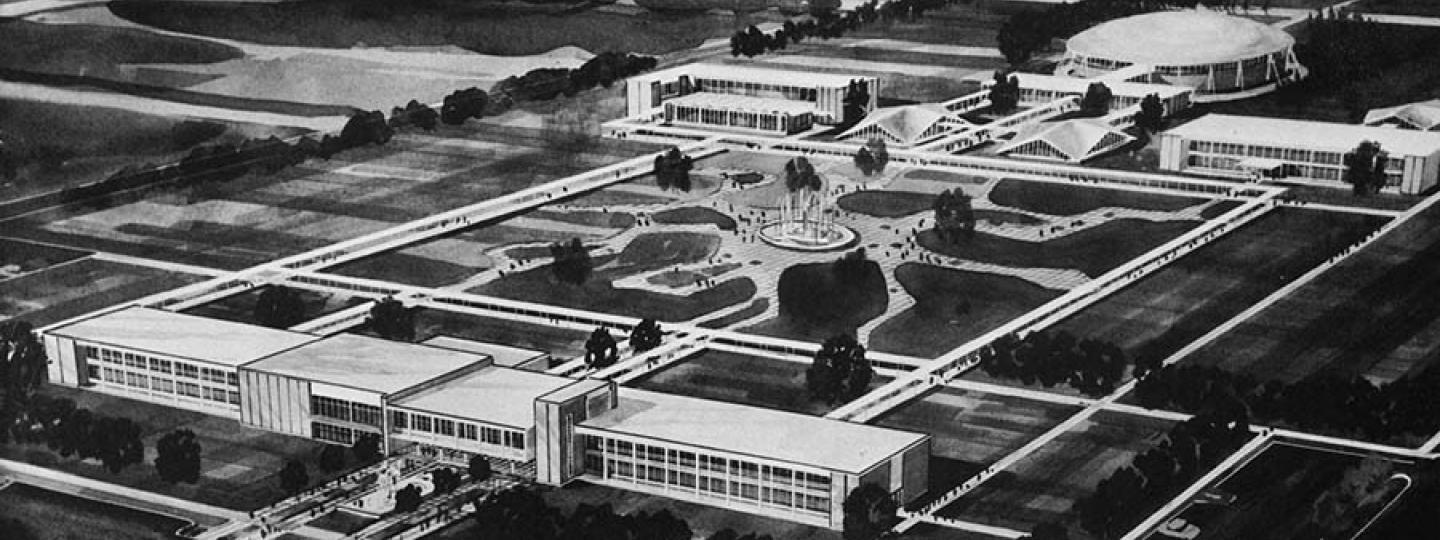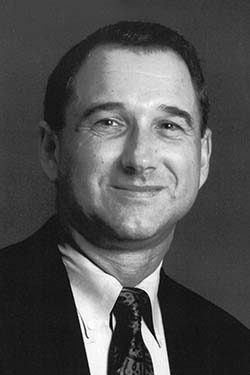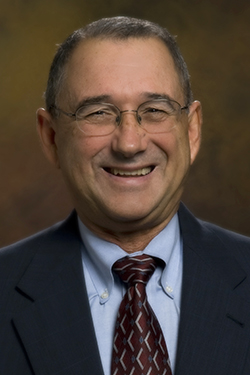'I found my niche': 52-year career started and ended at San Jac

"Not everyone can say they spent 52 years in one place."
Dr. Ron Rucker counts himself among the few. Fresh out of university, he joined the San Jacinto College faculty in 1965 until his retirement as vice chancellor for administration 44 years later. Not ready to hang up his hat, he continued another eight years as a consultant, helping to build the College for the future.
"I'm one of the very few people who has stayed at the same place his whole career," Rucker said. "I found my niche."
Growth track
Pasadena ISD almost snagged Rucker first. But soon after signing a contract as an intermediate teacher, he landed an interview with San Jac's first president, Dr. Thomas Spencer.
In 1965, the College spanned four buildings facing two-lane Spencer Highway, and the president interviewed every candidate himself. Spencer extended the 24-year-old an assistant basketball coach position, and Pasadena ISD graciously released Rucker from his contract.
In its first decade, San Jac offered secretarial programs and basic courses for students who couldn't afford to start at a university. As enrollment grew, it added more vocational programs to meet the local workforce need.
"In the 70s, everything started evolving to prepare people for specific jobs," Rucker said.
As the College branched farther into the community with the North Campus in 1975 and South Campus in 1979, Rucker also moved into roles with more responsibilities. While working full time, he had earned his doctoral degree in higher education administration. This led to higher leadership roles — from director of guidance and dean of student services to the first Central Campus president.
Teamwork
In 1983, Rucker accepted his final role as vice chancellor of administration. The secret to his advancement? He credits planning and networking skills.
"I always try to surround myself with people smarter than me," he said. "If you do that, whatever project you work on, it's going to be a winner."
Rucker needed that team when he was leading the 1999 bond initiative, which funded interactive learning centers for each campus. With trustees and the Chancellor, he traveled nationwide to see how other institutions were meshing classrooms and new computer technology.
Planning was tricky since they were aiming at a moving target. Ultimately, they designed each building with four types of computer classrooms for lectures, independent learning, and remote instruction.
"When we started designing the interactive learning centers, we were thinking of using one computer," he said. "By the time we finished, we had upgraded about three levels of computers in three years. You've got to stay abreast and know what's happening."
Rucker not only led new construction projects but also coordinated repairs after Hurricane Ike. Thanks to his leadership, 59 of the College's 60 buildings reopened two weeks after the almost Category 3 storm made landfall.
Monumental mark
In more than half a century with San Jac, Rucker witnessed much change. In the beginning, he taught tennis at a Pasadena park because there were no on-campus courts. By the end, he helped design the allied health simulation labs with computerized manikins that mimicked breathing, having seizures, and even giving birth.
While Rucker credits the mark he left on San Jac to "good people" around him, he feels the College is making a monumental mark on the community under Chancellor Dr. Brenda Hellyer and the Board of Trustees.
In the 1960s, no one could envision email or social media, much less virtual learning. Now students can choose from in-person and online classes in multiple formats.
"It was a different era [then]," Rucker said. "But if you don't keep changing, you're not going to stay relevant. Dr. Hellyer has taken San Jac leaps and bounds. I don't know anyone who could do a better job of leading San Jac into the future."
Banner image: Early artist's rendering of the Central Campus


